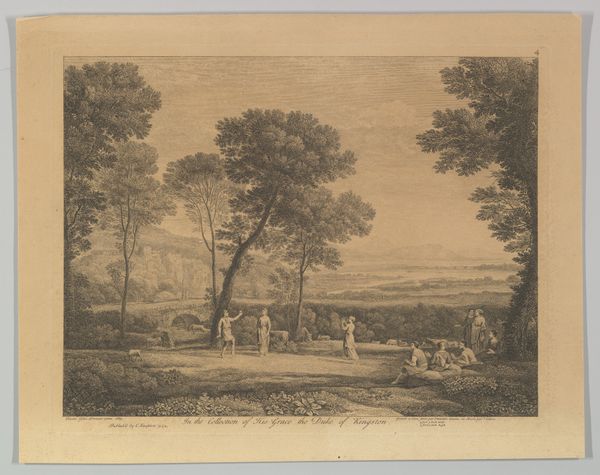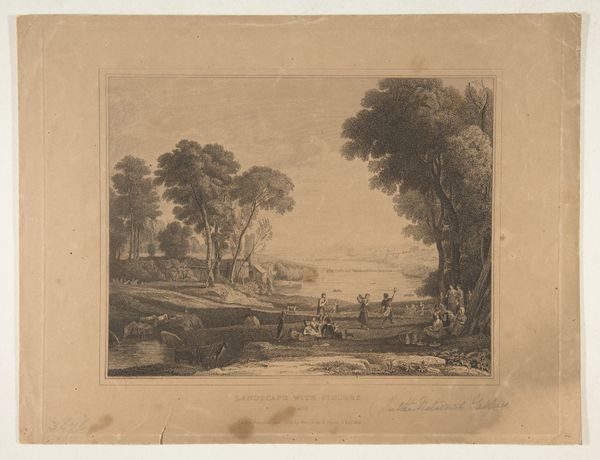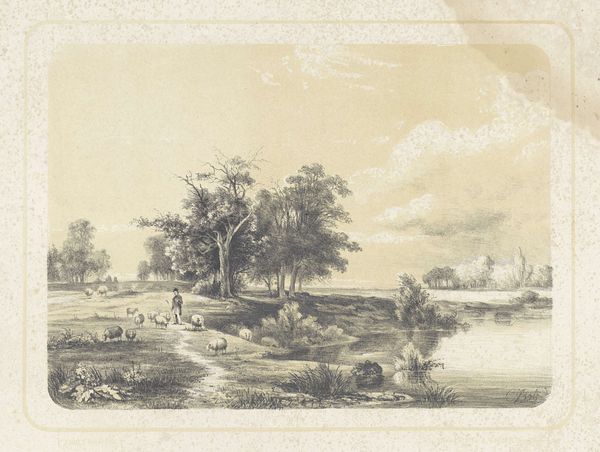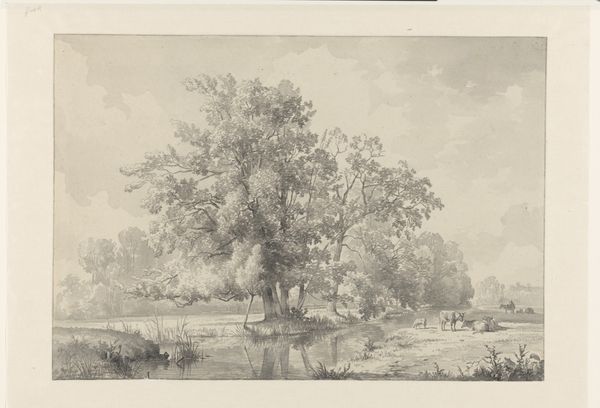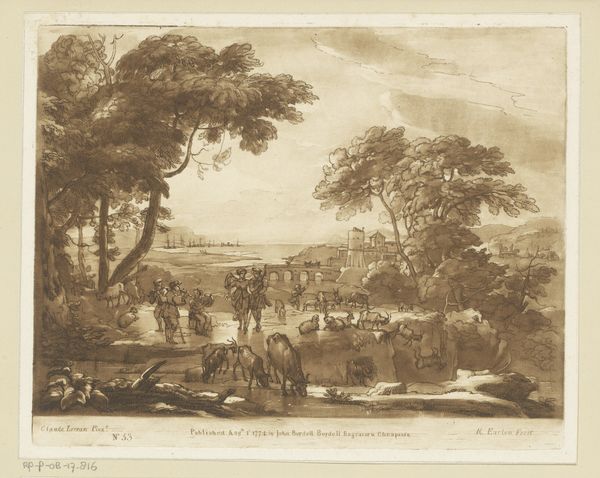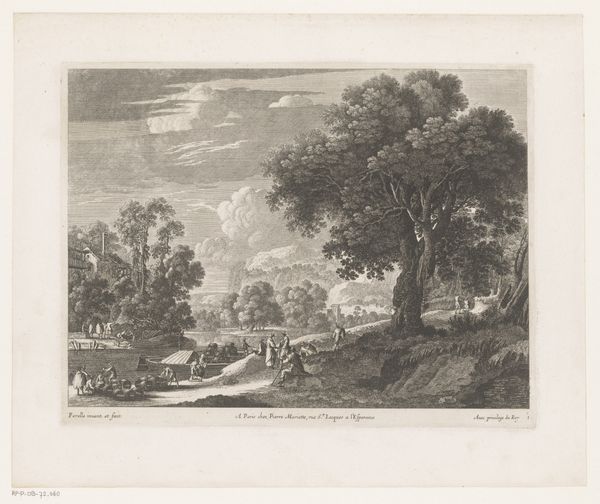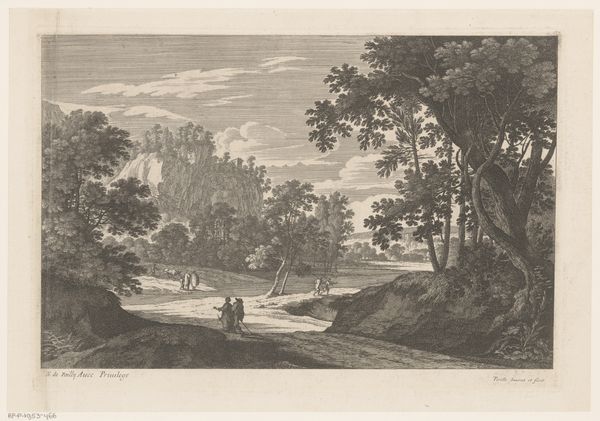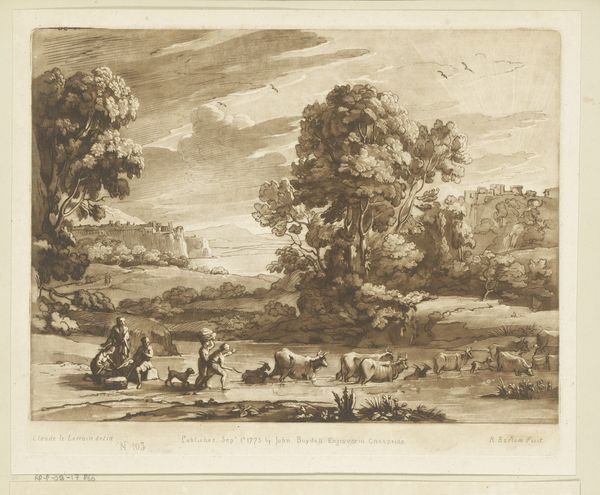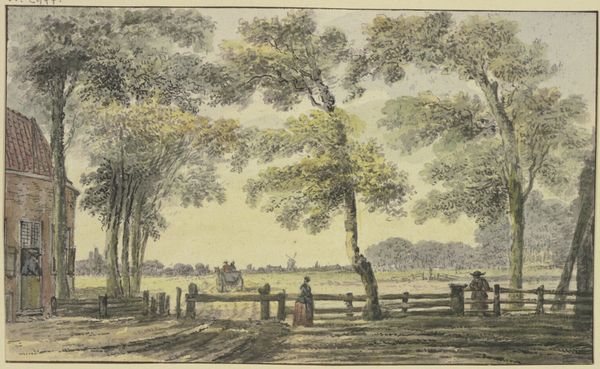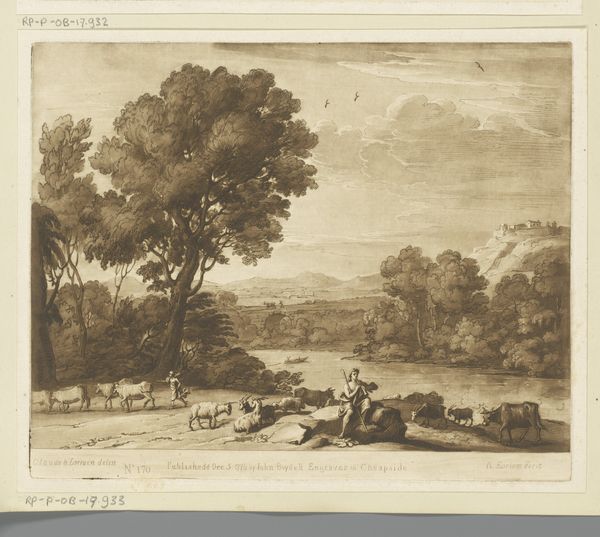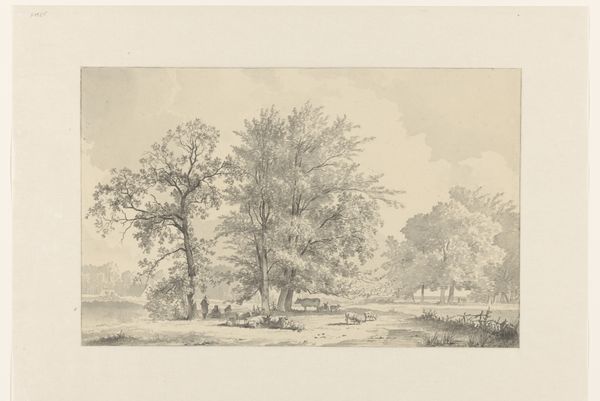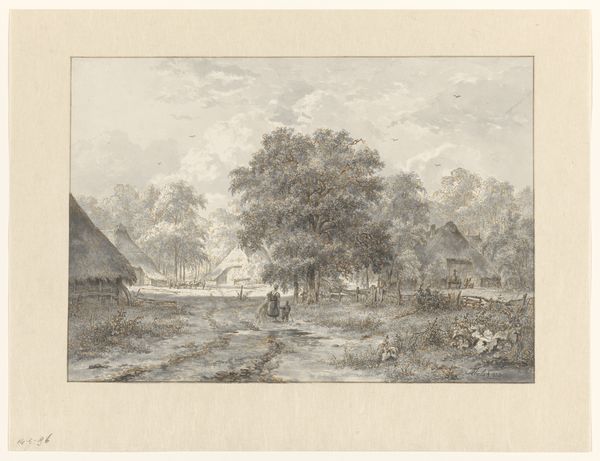
drawing, paper, pencil
#
pencil drawn
#
drawing
#
aged paper
#
light pencil work
#
pale palette
#
pencil sketch
#
light coloured
#
landscape
#
paper
#
pencil
#
pencil work
#
genre-painting
#
realism
Dimensions: height 257 mm, width 428 mm
Copyright: Rijks Museum: Open Domain
Editor: This drawing, titled "Landschap met boeren en vee" or "Landscape with Farmers and Cattle," is by Jan van Ravenswaay, created sometime between 1799 and 1869 using pencil on paper. The muted tones and detailed linework create such a tranquil and somewhat melancholic atmosphere. What strikes you most when you look at it? Curator: The power of images resides in their ability to echo across time, and here, the simple pencil strokes build a resonant chamber of cultural memory. Notice how the animals are not simply cows and goats; they’re symbols of pastoral life, fertility, and a deep connection to the land, values central to Dutch identity. Even the subtle tonal shifts speak to the fleeting nature of time. Editor: That's fascinating. I hadn't considered how the animals contribute to a broader sense of identity and continuity. Is there a specific historical context that enhances that understanding? Curator: Indeed. Consider the rise of urban centers and industry during the 19th century. This image becomes not just a depiction of rural life, but a gentle, perhaps idealized, reminder of a way of life that was gradually fading, preserving values the culture feared losing. The very act of sketching, a seemingly simple process, takes on the weight of cultural preservation. What feeling do you get from the gathering of people in the mid-ground, set apart by a house? Editor: It almost seems like they're frozen in time, enjoying a peaceful existence away from everything else. But I see how the gathering set in a place, framed by architecture can act as a symbolic counterpoint to encroaching modernity. Curator: Precisely! It speaks to our longing for connection, community, and simpler times, echoing sentiments found in folk tales and traditional songs. Now, looking at the overall composition, how might the artist be using the path to suggest an underlying message? Editor: It guides the eye through the landscape, but I'm not sure what it means… perhaps a journey, or the passage of time? Curator: Both. The path as a traditional signifier reminds us of our connection to the earth, to each other, to our history. In representing all of these symbolic and tangible elements of that landscape Van Ravenswaay captured more than the likeness of it. He distilled something about the human need for place, home and the passing of time. Editor: Thank you for unraveling that for me! I never considered all these cultural implications and how they connect to the artist's choice of subjects.
Comments
No comments
Be the first to comment and join the conversation on the ultimate creative platform.
